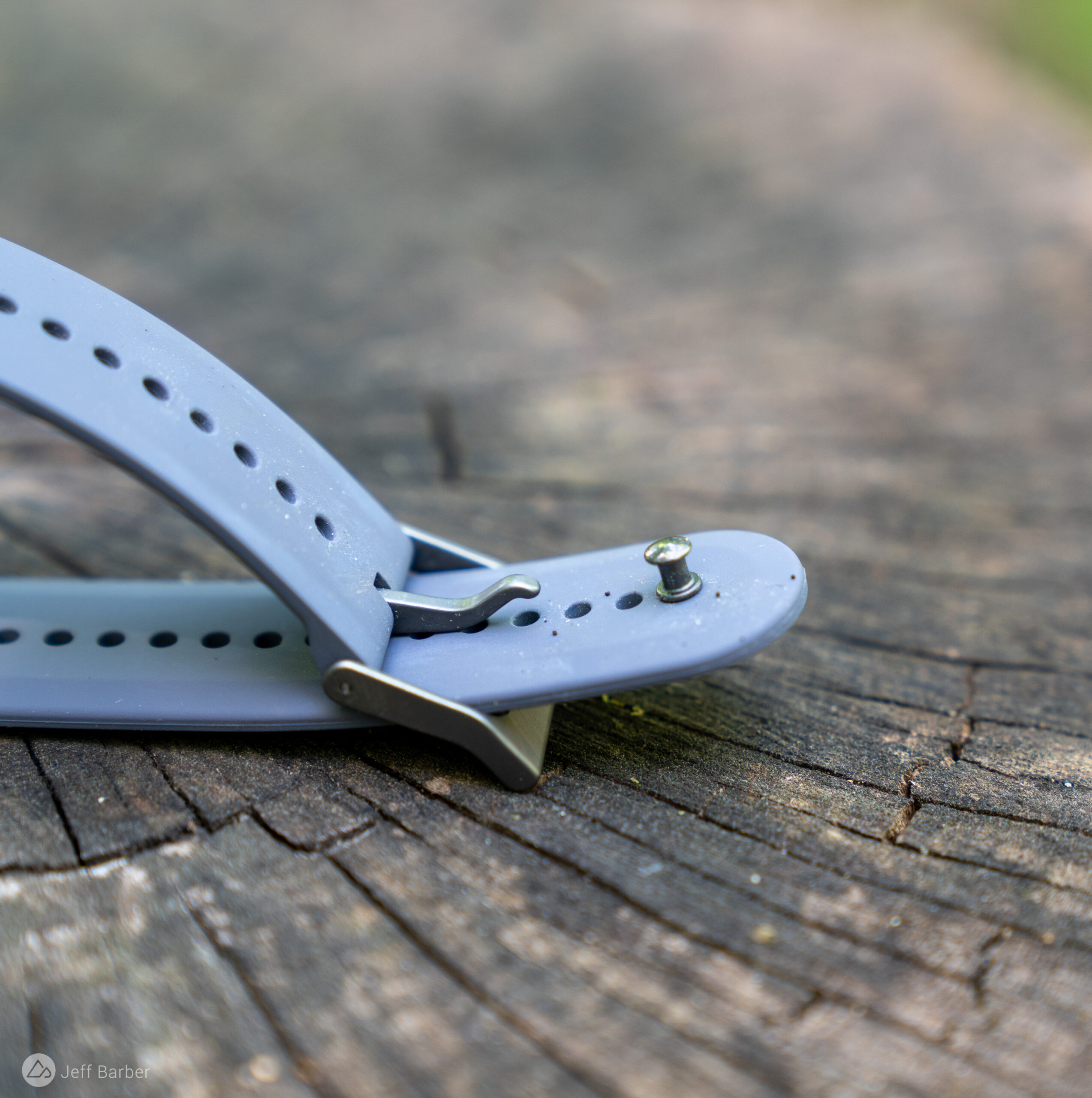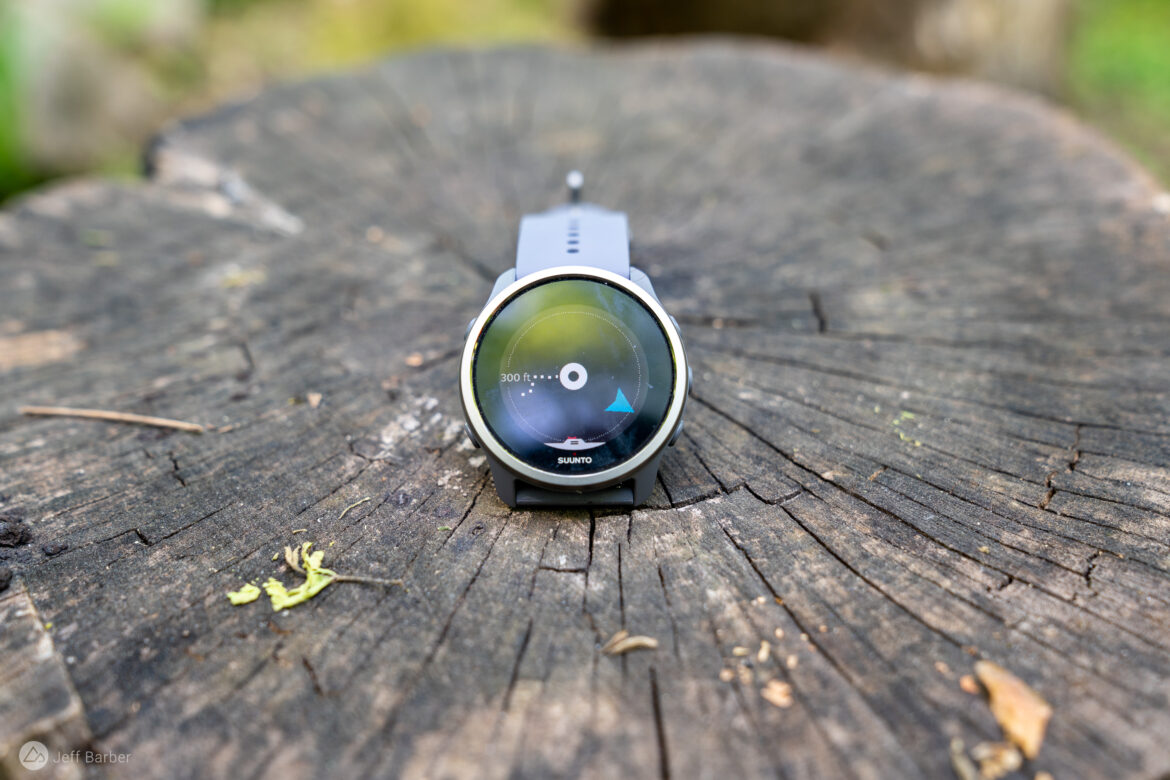
Smart watches have arrived. Or at least, it would seem so based on a recent Singletracks survey where 87% of respondents reported owning a fitness tracking wristwatch like the Suunto 5 Peak I’ve been testing this spring. Not only does the 5 Peak track all the usual metrics like speed and distance, it even offers basic navigation for hitting the trail, all in a compact package.
Suunto 5 Peak features
The Suunto website lists several dozen features for the 5 Peak but I’ll focus on the most important ones for mountain bikers. For starters the watch uses not just GPS and GLONASS for location tracking, it’s also able to connect to Galileo, QZSS, and Beidou satellite networks. There’s a wrist-based heart rate monitor, a color screen with backlight, sleep tracking (hey, mountain bikers gotta sleep too), and a step counter for measuring those hike-a-bikes. When connected to a compatible smartphone you can even control your music app and get alerts and text messages from your buddies in the lift line.
With so many features, many of which I didn’t mention above, the five watch buttons — two on the left and three on the right — get a lot of use. The buttons are tactile and easy to use, though I can’t say the same thing about the watch’s menu system. Unlike other watches I’ve tested, there aren’t dedicated up/down/select buttons. Instead, the buttons are contextual, depending on whether you’re tracking or not, so the watch tries to give you little hints about what a given button does in a particular screen.
Suunto 5 Peak – Form factor


The size of the watch face is on the small side for fitness trackers which means it should fit most wrist sizes. It’s lightweight too at 39g and is water resistant up to 30m. Instead of a stretchy loop on the band to wrangle the loose end of the strap, Suunto uses a metal pin that holds tight and is easy to use.
In spite of its small size the Suunto 5 Peak offers impressive battery life. The brand claims seven days of uptime on a single charge, and even more if it’s not passing along all your TikTok notifications throughout the day. For continuous tracking Suunto says to expect 20 hours of battery life which can be extended to four days(!) of tracking in ‘Tour’ mode. Based on my tests and usage I would say these battery claims are pretty accurate. The watch is charged via USB using a special connector, and a full top-off seems to take no more than a few hours.
On the trail with the Suunto 5 Peak

Navigation tends to be a feature that’s only available on the more expensive smart watches so it’s nice to see that Suunto is able to include it with the 5 Peak. Given the constraints of a small screen the map is pretty basic, though still offers enough detail to suggest general directions to a point of interest (POI) or along a pre-determined route. The watch can even ding and vibrate with turn-by-turn alerts to help you keep your eyes on the trail. If your route has altitude data there is also a plot showing the climbs.



Routes and POIs need to be created and/or loaded using the Suunto app which I found mostly easy to use. Suunto has been collecting fitness data from thousands of athletes and has built their own heat maps showing the most popular roads and routes in any given area. In fact Hammerhead recently announced they would be using the Suunto heatmap data in their app and devices. Like most other GPS watches, the Suunto 5 Peak can send data (via the app) to third-party services like Strava and TrainingPeaks after each ride.
Thanks again to the small form factor I found the watch to be comfortable on the bike and it didn’t interfere with wrist placement or movement. The watch can be a little pushy about getting the strap tight enough for the heart rate monitor to work properly. Following my first couple of rides I found I needed to tighten the strap a notch, and then another notch, to get good data. That meant wearing the strap a little tighter than I would have liked but it wasn’t so tight that it left a mark or felt painful at all.
One final feature I found to be handy on the trail is a sunset alarm. Based on the date and your current location the 5 Peak can alert you ahead of time so you’re not caught off guard in the dark. I set mine to go off one hour before sunset which is a good heads up when I’m out playing in the woods.
For those who are training for a race or just generally working to build fitness, the Suunto 5 Peak offers adaptive training guidance in the app and on the watch. After each workout you can indicate how you felt which may correlate with your progression over time.
Suunto – Accuracy
I took the Suunto 5 Peak out to the local running track for my usual accuracy test and found it reported a distance of 0.97mi on a 1-mile circuit. That’s even better than the Garmin Forerunner 235 I was wearing on my other wrist at the time which reported 1.04mi. There are two position tracking frequency options, one much more accurate than the other; ‘best’ plots a point every second, while ‘good’ records a point every minute. The latter is really only a good idea for maximizing battery life, say for tracking a multi-day bikepacking trip, and isn’t great in terms of accuracy.
Now for the bad news. The first three tests I attempted with the Suunto 5 Peak failed to record any data for an entire quarter-mile lap. The watch clearly indicates when it’s searching for a satellite lock, and I waited for the all-clear, green box around the start message before beginning each lap. However each time I returned to the start, the watch reported it was having problems with the signal. To be fair, a normal ride would be much longer so any misses early in the ride shouldn’t have much impact on the overall tracking. On normal rides I definitely found this to be the case, with distances generally in line with those reported by other devices.
Elevation tracking wasn’t great in the track test either, as shown in the chart above. Part of the issue could be the lack of a barometric altimeter. The watch relies instead on GPS elevation calculations which can be wonky from time to time. The good news is that the elevation reading settled around 1015ft above sea level toward the end of the test, which is pretty close to the actual number. It seems the watch needed a warmup period and that fits with my impression that the Suunto 5 Peak requires slightly longer to get a satellite lock than other GPS units I’ve tested.
Bottom line
The Suunto 5 Peak packs an impressive array of features into a small and convenient form factor. While this review only highlights the bike-specific functions, this is truly a multi-sport device that also includes the most useful day-to-day smart watch features like notifications and music controls.
- Price: $300
- Available at REI, Amazon, and other online retailers.
Party laps
- Lightweight and comfortable for everyday wear
- Navigation features in a small package
- Customizable watch faces
Pros and cons of the Suunto 5 Peak smart watch.
Dirt naps
- Inconsistent buttons make for a long learning curve
- Slow satellite fixes
- Small screen for weak eyes








0 Comments